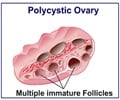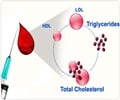- Dyslipidemia - (http://www.hormone.org/diseases-and-conditions/heart-health-and-metabolism/dyslipidemia)
- About Dyslipidemia - (http://www.msdmanuals.com/professional/endocrine-and-metabolic-disorders/lipid-disorders/dyslipidemia)
- Medical Definition of Dyslipidemia - (http://www.medicinenet.com/script/main/art.asp?articlekey=33979)
- Digestive Weight Loss Center - (http://www.hopkinsmedicine.org/digestive_weight_loss_center/conditions/high_cholesterol.html)
- Management of Dyslipidemia in Adults - (http://www.aafp.org/afp/1998/0501/p2192.html)
What is Dyslipidemia or Lipid Disorders?
There are two kinds of fats in the body - triglycerides and cholesterol. Triglycerides are fats that have not been used by the body and majority of it comes from dietary fats like found in meats, dairy products and cooking oils. The liver also makes some amount of triglycerides.
Cholesterol is required by the body to synthesize hormones, make the wall of cell membranes and metabolize food. Majority of the cholesterol is produced by the liver (70%) and some of it comes from animal fat that we eat. Cholesterol does not dissolve in blood and requires a protein substance to act as a carrier to reach various parts of the body. This carrier protein is called lipoprotein.
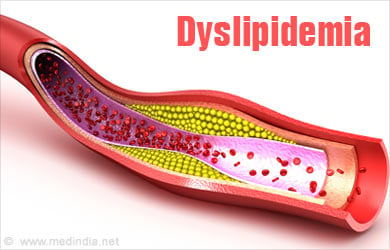
Whenever there is an imbalance in the level of fats or lipids in the blood stream it is called ‘Dyslipidemia’ and this condition can increase risk of:
- Heart disease
- Obesity
- Diabetes
- Kidney disease
- Fatty liver
- Thyroid disease
The condition Dyslipidemia or lipid disorder could mean any of the following situations:
- High level of “bad cholesterol” or Low-density lipoprotein (LDL) in the Blood
If this is high, you may be at risk for cardiovascular disease and the higher it is, the higher your risk for heart disease
- Low Level of “bad cholesterol” or High-density lipoprotein (HDL) in the Blood
Low level of HDL is associated with increased risk of heart disease whereas High levels of HDL levels seem to be protective against heart disease.
- High Level of Triglycerides in the Blood
High level of circulating triglycerides makes you prone to heart disease due to build-up of plaques in your arteries and makes you prone to metabolic syndrome.
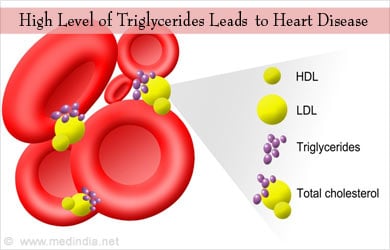
Ideally, three different fasting (overnight or 9-12 hours) lipid measurements are used to find out if you are suffering from lipid imbalance or dyslipidemia. If all the three levels are high it is also called dyslipidemia or hyperlipidemia. ‘Lipid Profile’ is part of many routine health screening checks to quantify the cardiac risk of a person.
Why is high Level of Cholesterol bad for the body?
Low-Density Lipid DL (LDL) cholesterol is prone to deposition on the walls of blood vessels making them narrow and resulting in restriction in the flow of blood.
The body’s defense mechanism attempts to safeguard these blood vessels by sending the white blood cells to fight the LDL. This leads to the oxidization of LDL that is toxic. There is inflammation of this site and, over a period of time, more white blood cells, LDL and debris get deposited at this site, resulting in the formation of plaque. As the size of the plaque increases, it blocks the passage of blood through the artery completely.
HDL cholesterol ‘removes’ LDL cholesterol from the walls of blood vessels and even serves to transport them back to the liver where they are acted upon by the liver enzymes and reprocessed. This is the reason why HDL cholesterol is termed the ‘good’ cholesterol.
If the level of HDL cholesterol is high then it controls the level of LDL in the blood stream.
How do High Triglycerides Affect the Body?
Triglycerides can be taken up by cells and tissues and used for energy or alternatively they may be stored as fat around our belly and buttocks.
The body releases triglycerides for energy whenever the glucose energy stores are depleted. When excess glucose that provides instant energy remains in the blood, it converts these into fats and contributes to high levels of triglycerides.
The blood lipid profile test or a lipid panel test will provide the level of various lipids in the body.
Level of Triglycerides in the Blood
| Level | Quantity |
| Normal | 150 mg/dL |
| Borderline high | 150 to 199 mg/dL |
| High | 200 to 499 mg/dL |
| Very high | Above 500 mg/dL |
As obesity is becoming a global problem high triglycerides have become a problem for about one in five people in some countries.
High level of triglycerides leads to thickening and hardening of artery walls which could result in a host of conditions.
Apart from food, the level of triglycerides can also increase due to the use of drugs such as:
- Birth control pills
- Beta blockers
- Steroids
- Tamoxifen
- Diuretics
- Estrogen
What are the Causes for Dyslipidemia?
There are many factors for Dyslipidemia and they include:
- Genetic or Hereditary factors: Genes play an important role in the level of lipids in the body. There is a familial inheritance pattern that has been observed, where people within a family have been found to have higher levels of triglycerides if they carry the gene for it.
A small number of people there is a deficiency of the enzyme called Lipoprotein Lipase Deficiency (LPLD) that results in very high triglycerides level.
In another rare condition called Familial Combined Hyperlipidaemia (FCH) - both cholesterol and triglyceride levels are raised.
In another very rare condition called Type 3 Hyperlipidaemia where both cholesterol and triglycerides are raised.
- Hypothyroidism: Thyroid hormones induce the secretion of an enzyme that is important in the first step of cholesterol biosynthesis. The thyroid hormones also play an important role in HDL metabolism. Therefore, any changes in the levels of thyroid hormones affect the lipid profile of the individual.
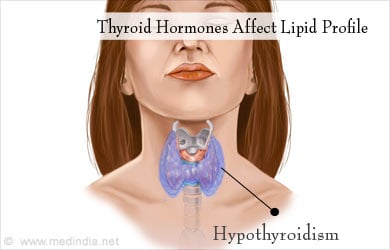
- Age: There is increase in the level of triglycerides as age advances
- Gender: Women are prone to Dyslipidemia post menopause and so gender is a factor for Dyslipidemia.
- Lifestyle Factors: Triglycerides are formed due to excess calories that are not burnt by the body; therefore a sedentary lifestyle increases the level of triglycerides.
- Food Pattern: Diet plays an important role in the level of cholesterol and triglycerides in the body. A considerable amount of high fatty food in the diet will directly affect the level of cholesterol and triglycerides in the blood.
- Type II Diabetes: Type II diabetes is caused due to poor insulin function/secretion. The dramatic changes in glucose levels also affect the level of lipids. However high triglycerides itself may result in symptom of pre-diabetes or metabolic syndrome.
- Excessive Alcohol Use: Alcohol abuse is one of the prime reasons for Dyslipidemia.
- Chronic Kidney Disease: Patients with chronic kidney disease have also been found to develop Dyslipidemia, with triglyceride levels increased, cholesterol levels remaining normal and a decrease in HDL levels.
- Antipsychotic drugs: Overuse of antipsychotic drugs have been found to lead to Dyslipidemia.
- Polycystic Ovary Disease: Women with polycystic ovary disease are prone to developing dyslipidemia. The cysts in the ovary lead to irregular periods, excessive facial hair, loss in hair on the head, weight gain and increased LDL and triglyceride levels in the blood.
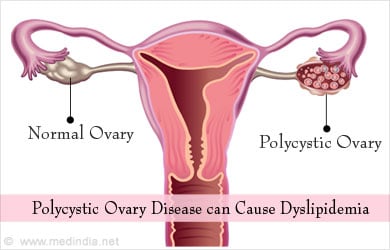
What are the Symptoms and Signs of Dyslipidemia?
There are no specific symptoms of Dyslipidemia but they lead to certain other conditions that include:
- Coronary artery disease
- Stroke
- Atherosclerosis
- Corneal opacification
- Xanthomas
- Corneal arcus
- Dizziness
- Retinal arteries look creamy white
- Impairment of balance
- Paresthesias
- Dyspnea
- Confusion
- Abdominal pain
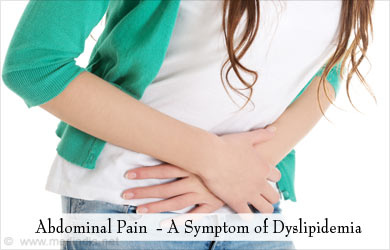
Dyslipidemia is a silent condition and is not noticed or diagnosed easily unless a blood test is prescribed. It is important to check for plasma lipid levels and to maintain it within limits to avoid serious illnesses which might result from high lipid levels in the bloodstream.
In most cases, noticeable symptoms of Dyslipidemia begin due to systemic conditions that arise from Dyslipidemia.
How to Diagnose Dyslipidemia?
There are no obvious symptoms for Dyslipidemia which would warrant a complete lipid profile test, however, since this condition is a pre-condition for many diseases including metabolic syndrome and atherosclerosis, a lipid profile screening is recommended if an individual has any two (sometimes even one) of the following risk factors:
Risk Factors:
- Age - Men older than 40 years or women above 50-55 years have an increased risk for Dyslipidemia
- High blood pressure
- A cigarette smoker - The risk is greater if the individual is a chain smoker
- Family history - Since heredity plays an important role in the lipid profile of an individual, an individual with a marked family history should undergo the test at regular intervals to ensure management and care
- Diabetes - Individuals with diabetes are at a higher risk for Dyslipidemia
A typical blood lipid profile measurement includes:
| Lipidcomponent | Measurement |
| Totalcholesterol | Measurementof all cholesterol in all the lipoprotein particles |
| HDL-C | High-densitylipoprotein cholesterol |
| LDL-C | Low-densitylipoprotein cholesterol |
| Triglycerides | Measuresthe total triglycerides level> |
| VLDL | Very low-density lipoprotein. Measured by usingthe formula triglycerides/5 |
| Non -HDL-C | Measuredby subtracting HDL-C from total cholesterol |
| Cholesterol/HDLratio | Ratioof total cholesterol and HDL |
How do you Treat Dyslipidemia?
The treatment of Dyslipidemia depends on the risk factors for coronary heart disease (CHD). When the risk of CHD is greater, the treatment provided is more aggressive:
Risk Categories:
| S.NO | RiskCategories | RiskFactors |
| 1 | Very High | A history of any of the followingconditions that have recently occurred or currently prevalent:
|
| 2 | High | Patients who have subclinicalsymptoms of the following conditions are at high risk:
|
| 3 | Moderately High | Patient has never had a cardiachealth disorder with less than 2 risk factors and less than 20% chance ofgetting a cardiac health disorder |
| 4 | Moderate | Patient has never had a cardiachealth disorder, less than 2 risk factors and less than 10% chance of getting acardiac health disorder |
| 5 | Low | Patient has never had a cardiachealth disorder and a maximum of one risk factor |
- Systemic diseases like diabetes should be controlled so that it does not increase the level of glucose in the blood stream and does not alter the lipid profile.
- There should be dietary changes to ensure that there is control in the level of cholesterol in the blood
| S.No | Component | Recommended percentage |
| 1 | Saturated and trans fats | 7% |
| 2 | Dietary cholesterol | Less than 200 mg per day |
| 3 | Plant sterolsnol or stanols | 2 grams |
| 4 | Soluble fiber | 3 to 6 grams daily |
| 5 | Fish oil | 3 to 6 grams daily |
- Medications: There are medications to lower the level of triglycerides in the blood and people in the very high risk and high-risk category should begin drug therapy immediately. The doctor’s prescription should be strictly adhered to as doubling the dosage would lower lipid levels by about 5 additional percentage while consuming more than the daily recommended dosage could lead to side effects.
- Niacin: Prescription niacin drugs have been found to be effective in the treatment of Dyslipidemia
- Omega 3 fatty acids: Fish oil that contains omega 3 fatty acids when used along with cholesterol medication aids in controlling the level of lipids in the blood stream.
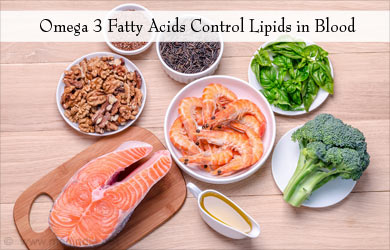
Instead of a single method of treatment, a combination of a healthy lifestyle and dietary habits along with the consumption of the right medications and supplements supports treatment progress.
How to Prevent Dyslipidemia?
It is important to take steps to prevent Dyslipidemia as it is a means of lowering the risk for a coronary heart disease.
The following important guidelines will help lower the risk for Dyslipidemia:
- Eating & Drinking Right - Eating low fat and high fiber foods will help maintain the level of triglycerides in the blood stream:
- Reduce intake of saturated fats and trans fats - These are the fats commonly found in
fast foods or so called ‘junk food’ and consists commercially available baked food and packaged foods. - Use healthy mono- and polyunsaturated fats for cooking - These include olive oil or canola oil for cooking.
- Avoid added and refined sugars in your daily food.
- Get as many daily calories from fruits, green vegetables and low-fat dairy products.
- Drink alcohol only in moderation - Alcohol is low calories and increases triglycerides
- Regular Exercise - The level of triglycerides in the bloodstream is elevated when the calories consumed are not utilized by the body. It is recommended that 150 minutes of exercise a week will aid in controlling risks.
- Controlling Systemic Diseases - Systemic diseases like Diabetes which are risk factors for Dyslipidemia should be managed carefully.
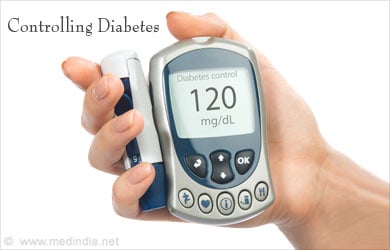
Top Five Health Tips to Control Lipids
In brief, to reemphasize the above points you can maintain the level of triglyceride in the body by the following:
- Follow a diet like the Mediterranean diet - It includes plenty of fruits, vegetables, herbs, whole grains, legumes and nuts in the diet. Seafood and poultry should be consumed in moderation while red meat should be avoided. This diet is considered a heart healthy diet. Avoid high fat junk food that are low in nutritive value but have high levels of saturated fat.
- Weight - Maintain a healthy weight
- Alcohol - Drink only moderate amount of alcohol
- Smoking - Avoid Smoking
- Exercise - 150 minutes of exercise a week


